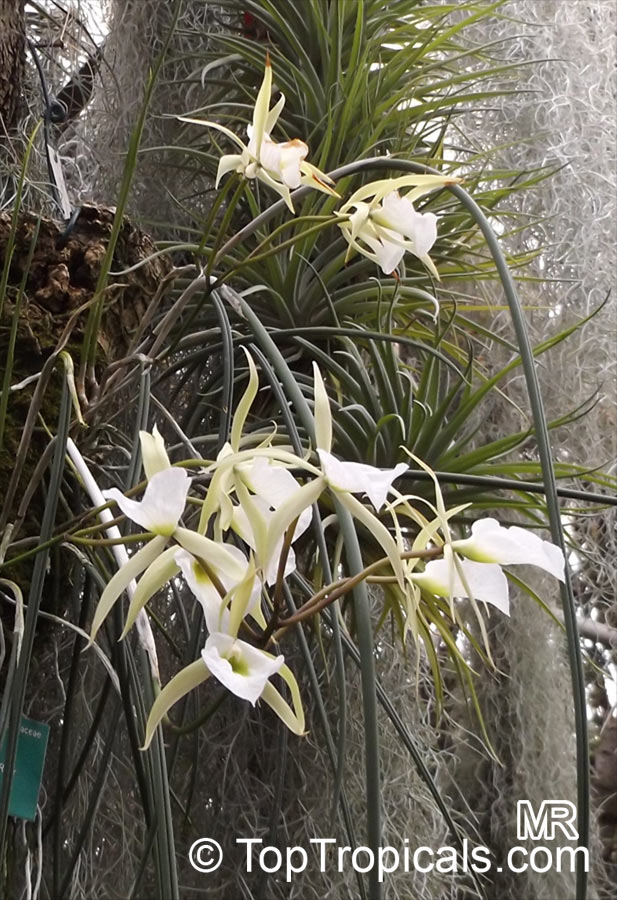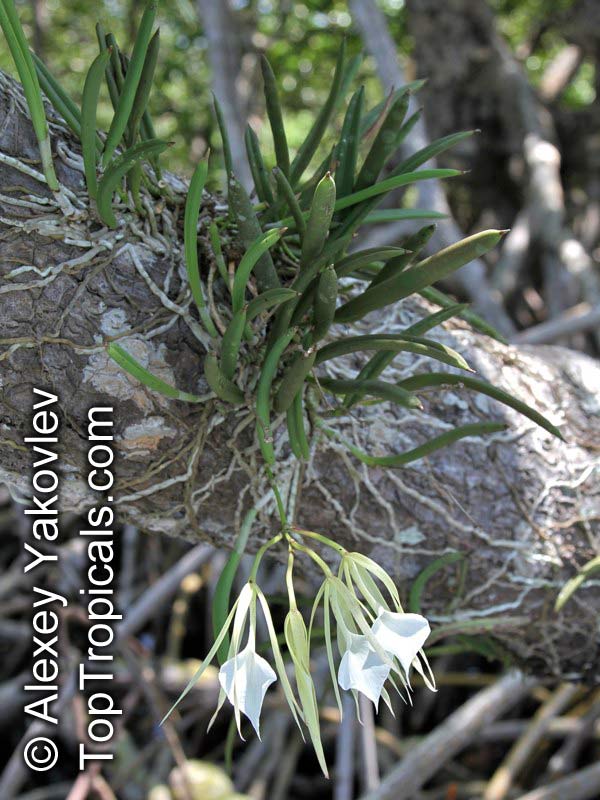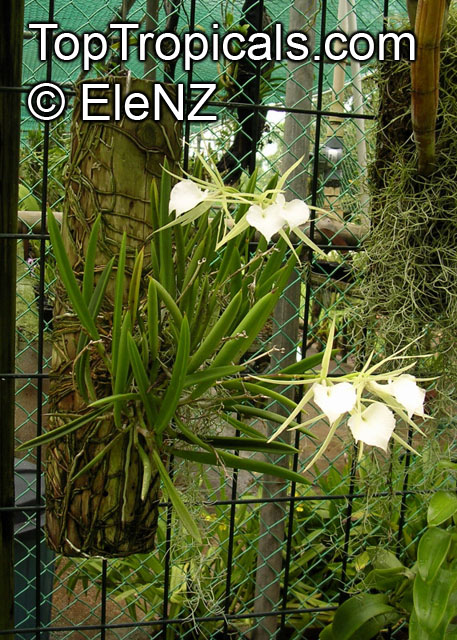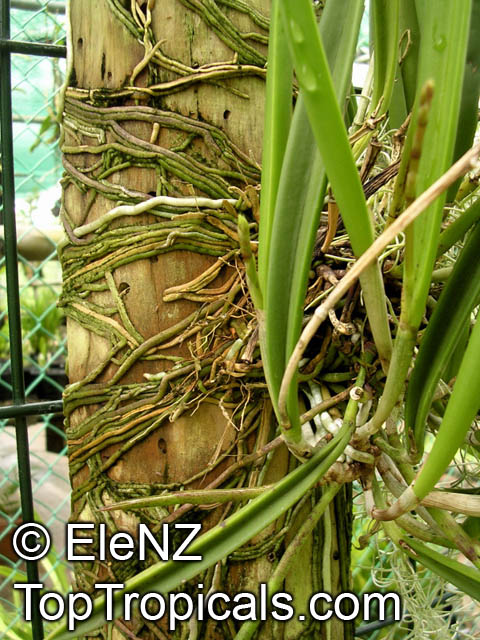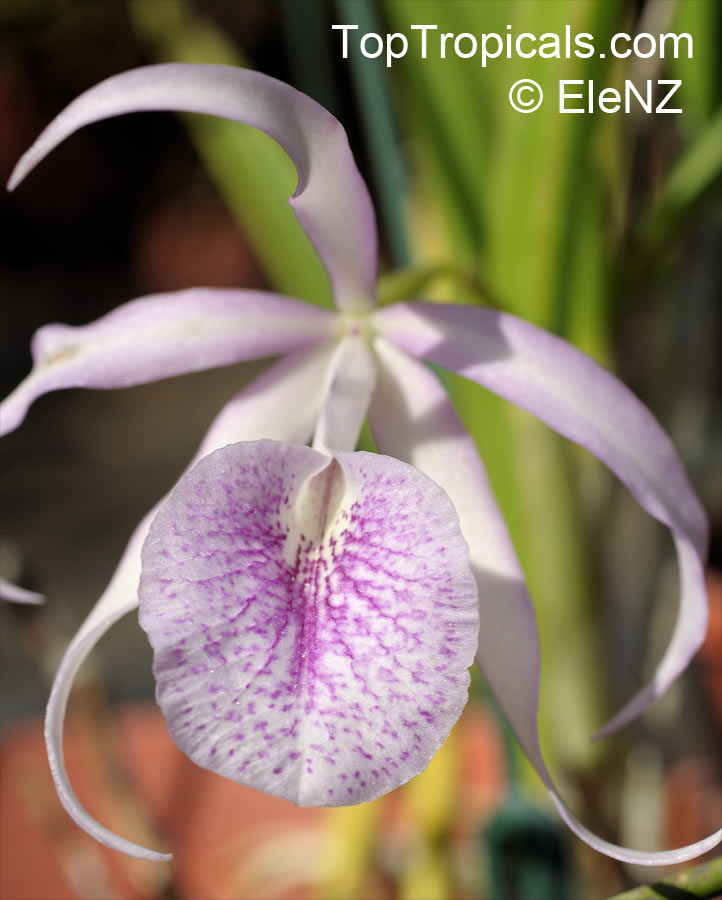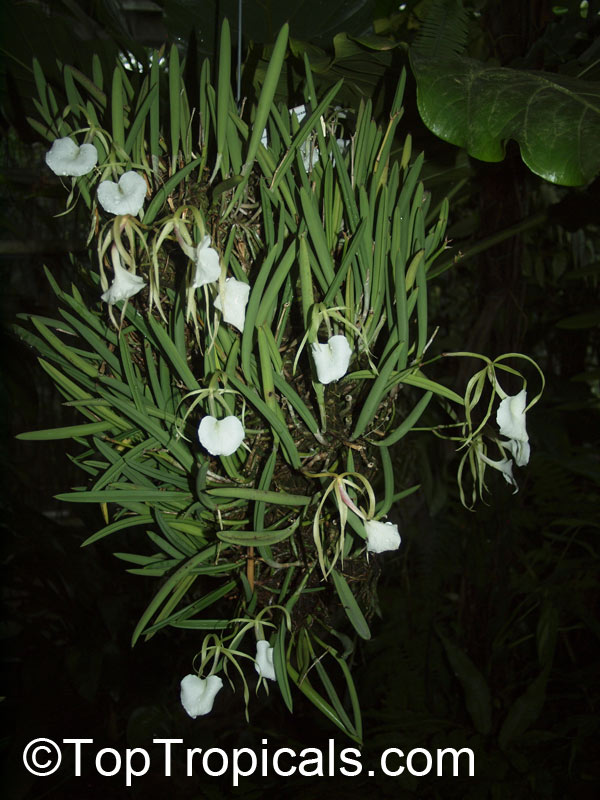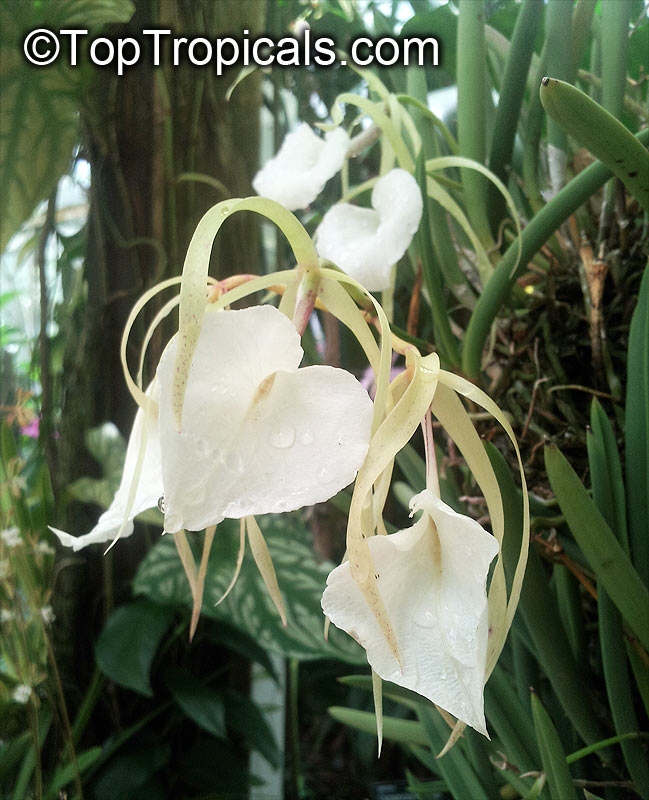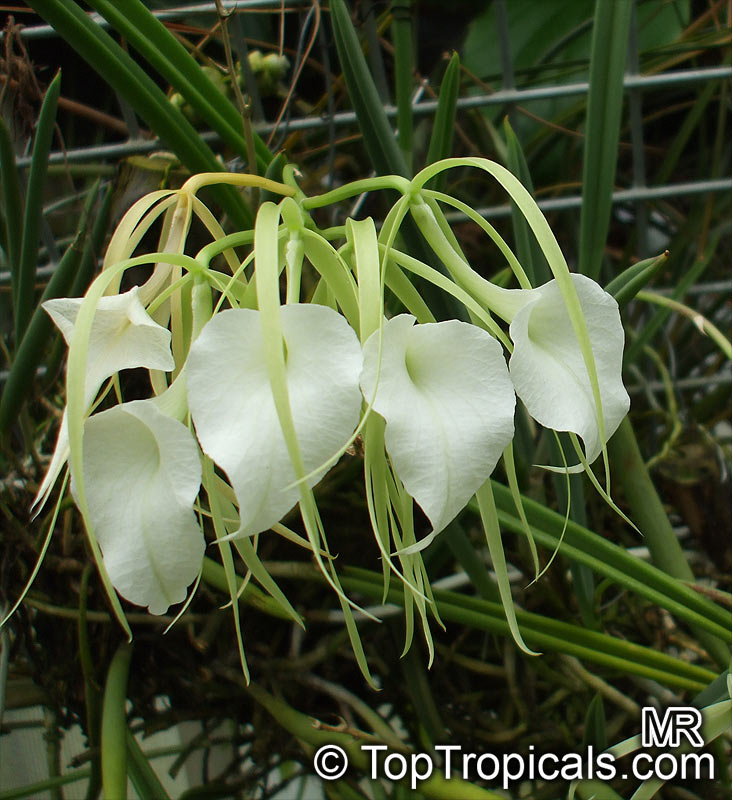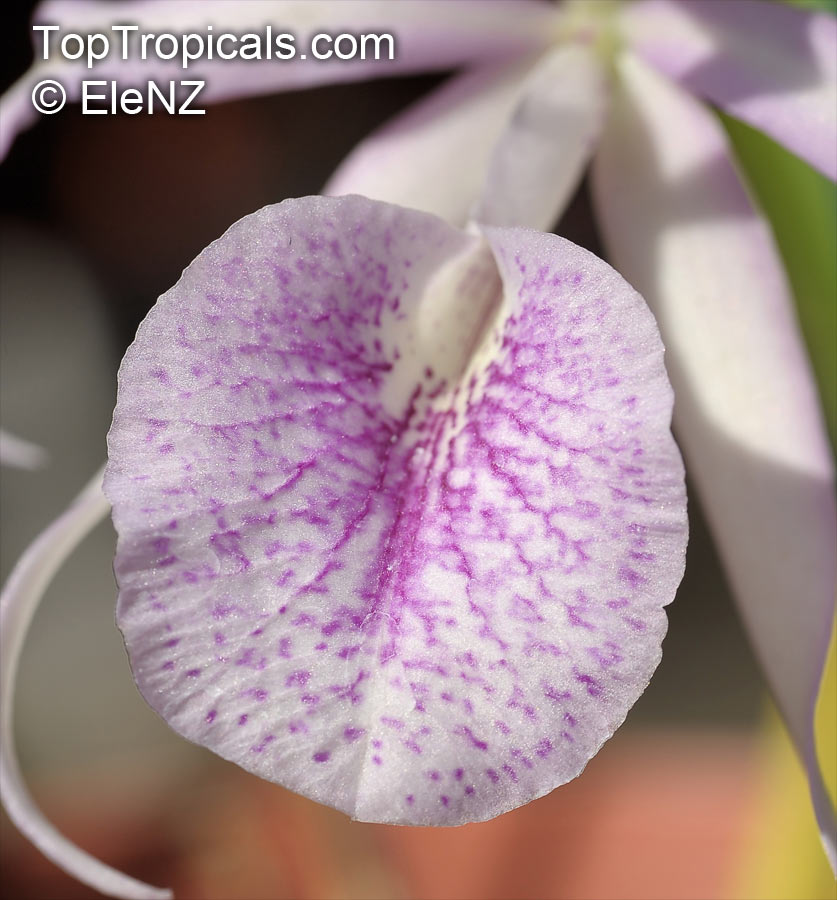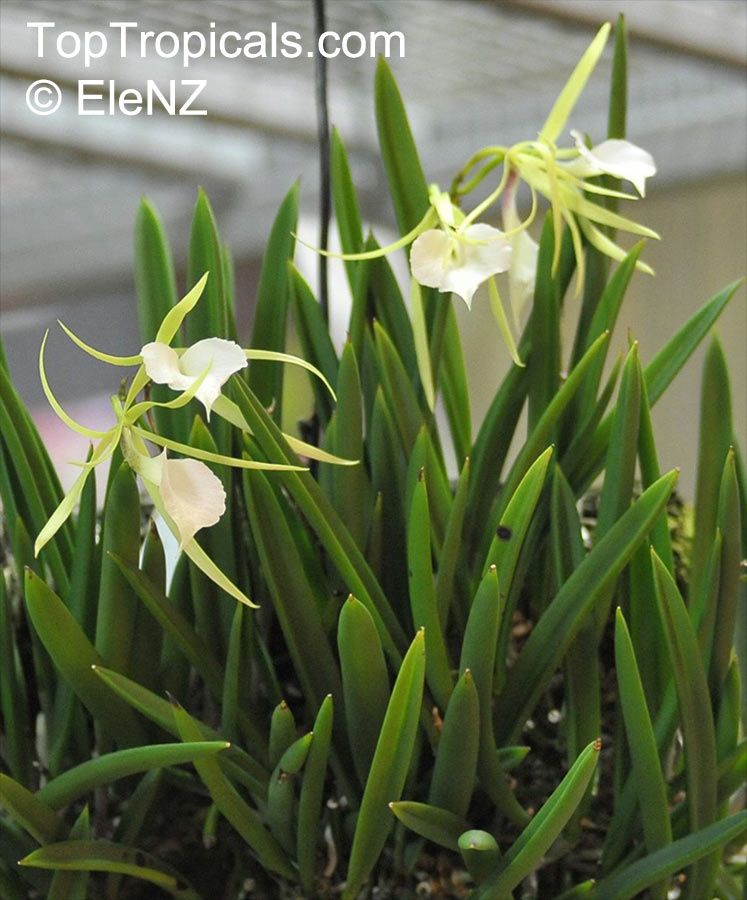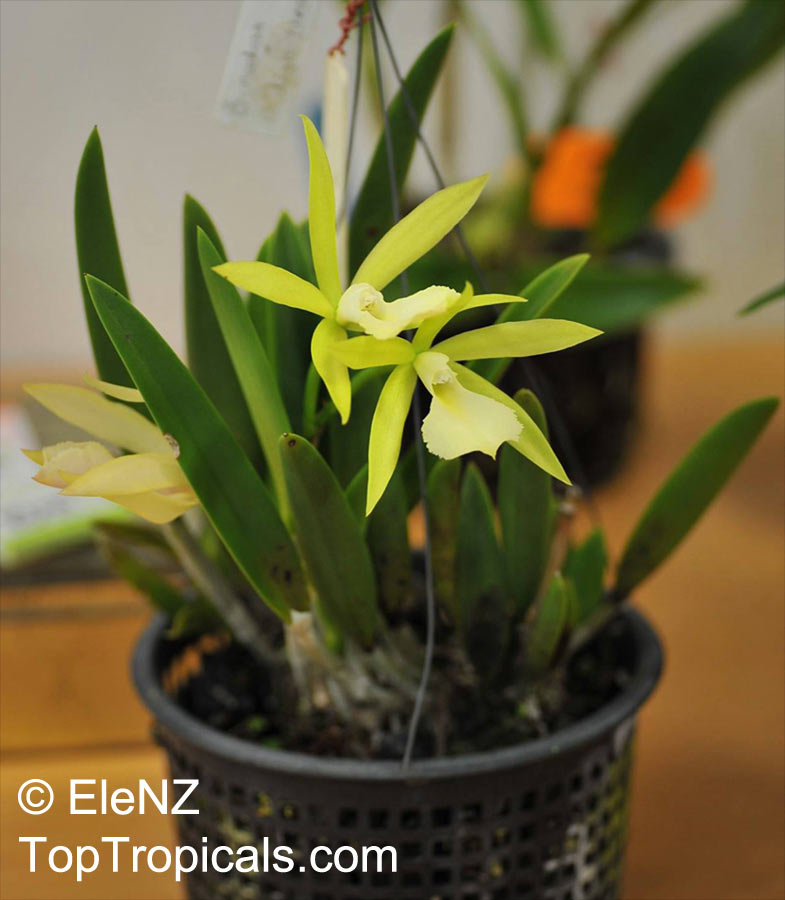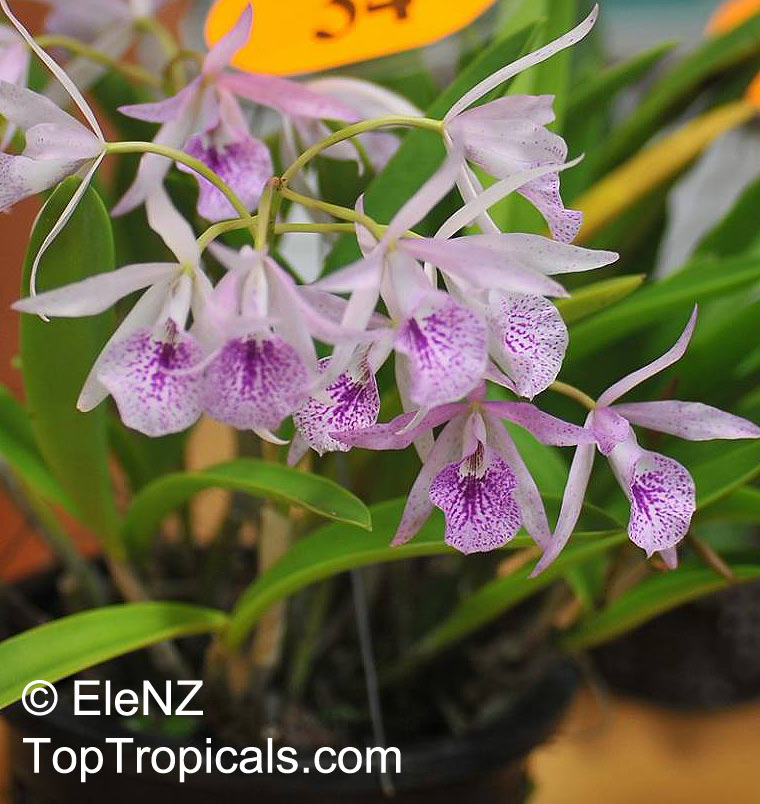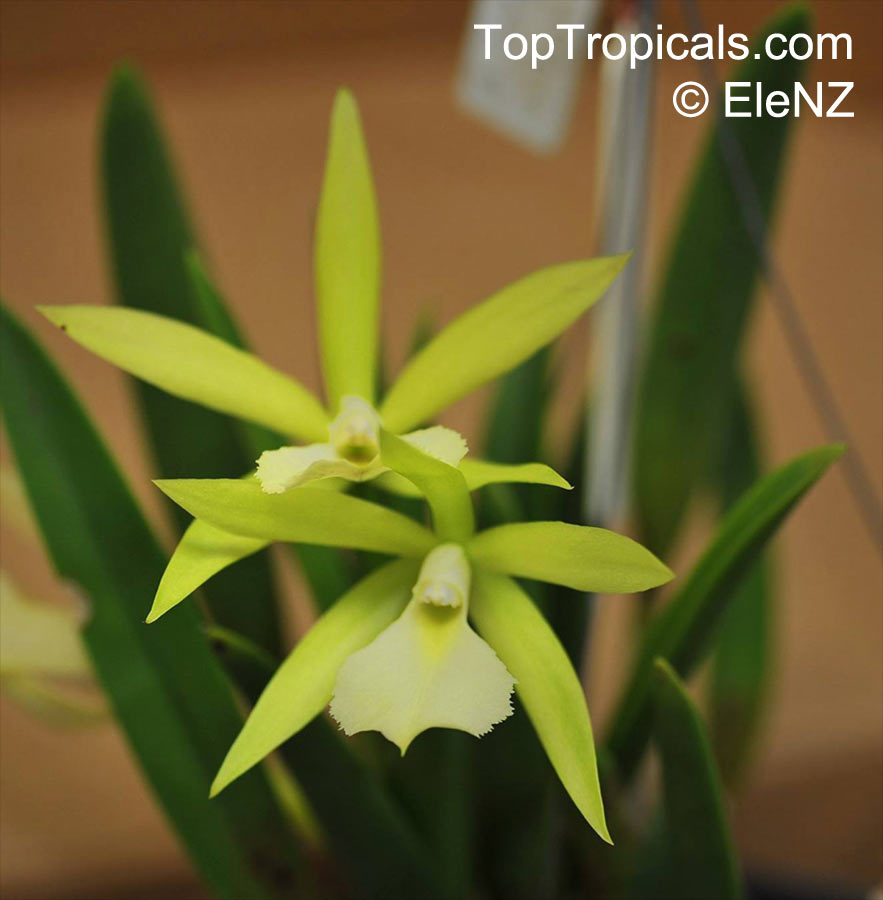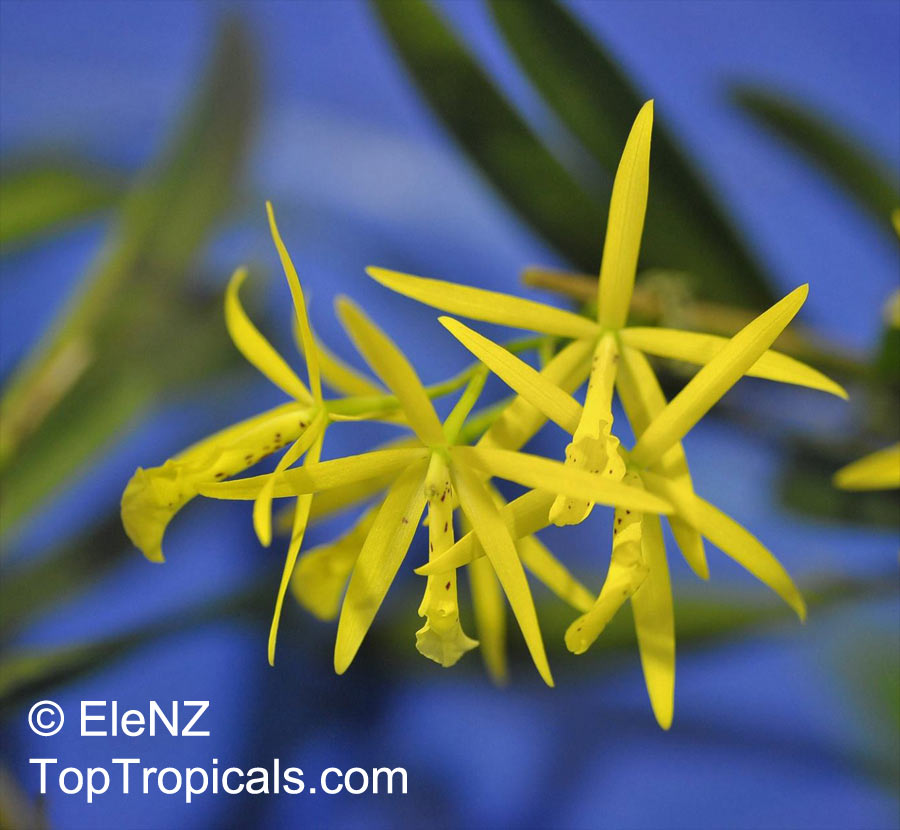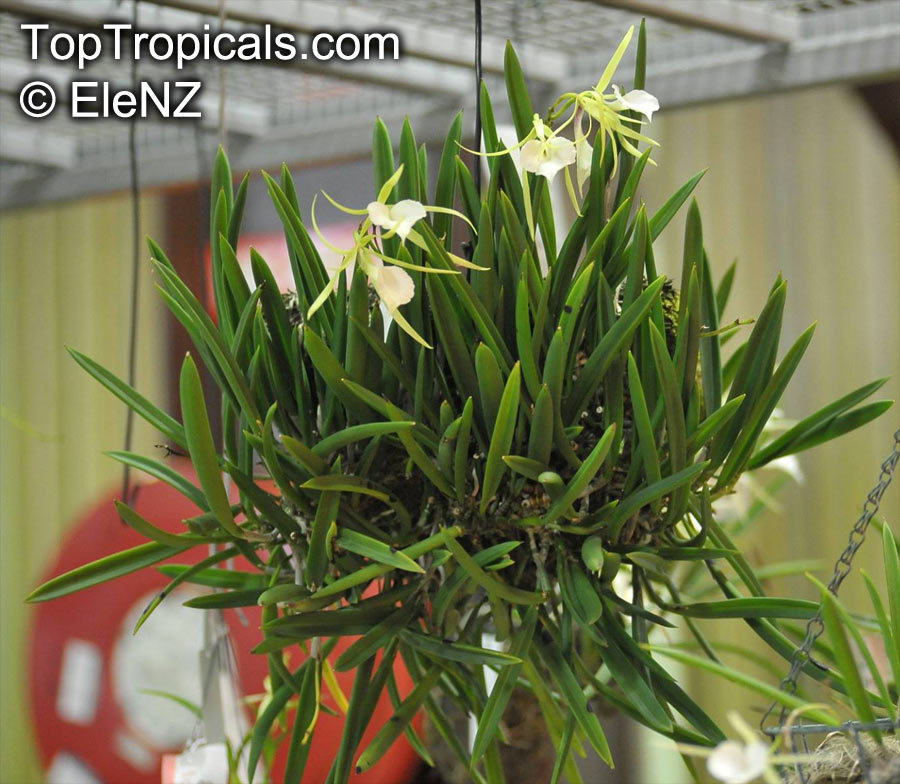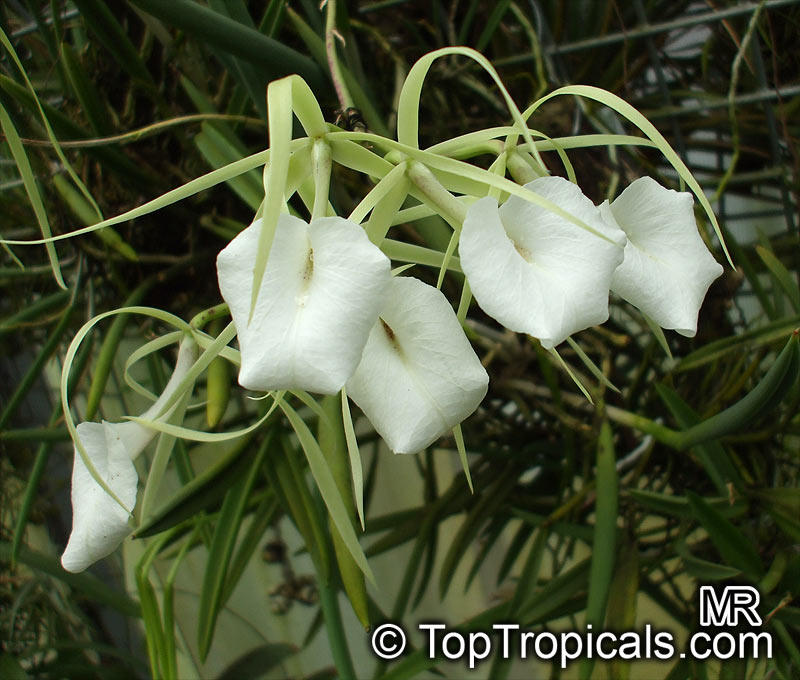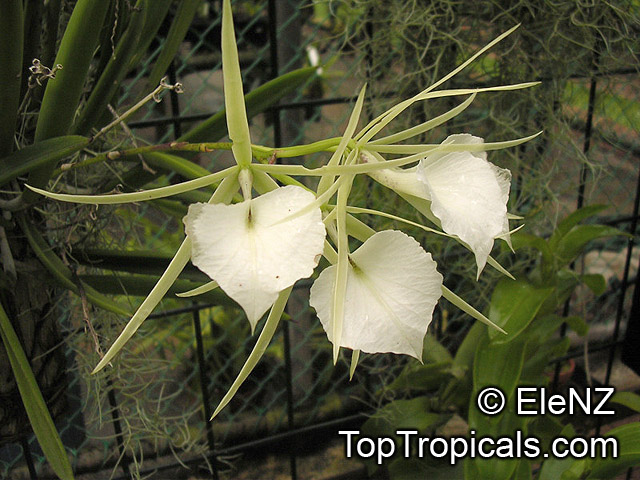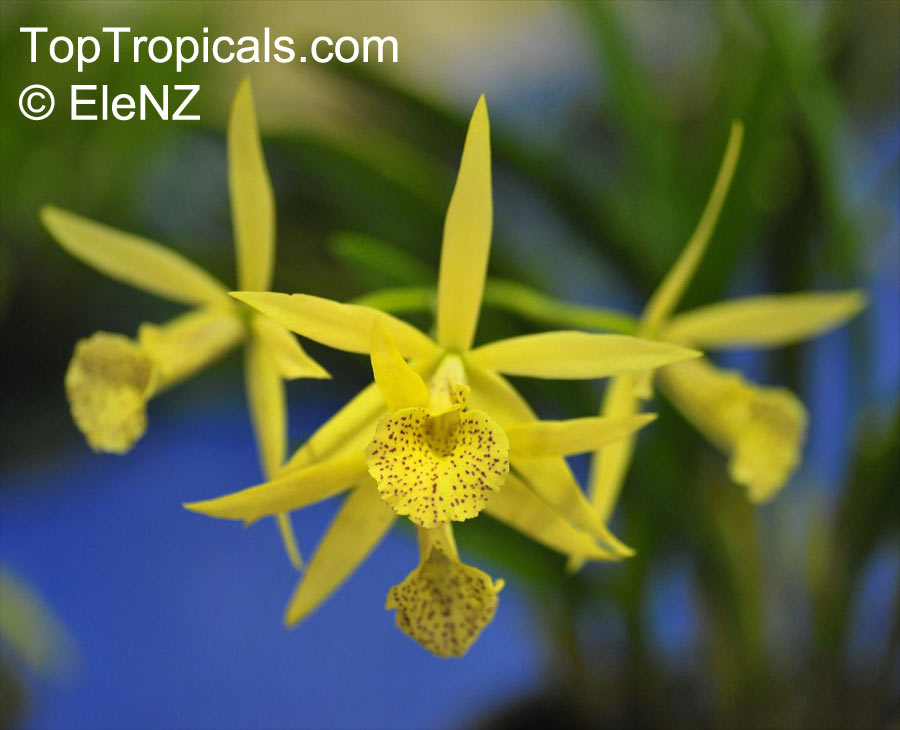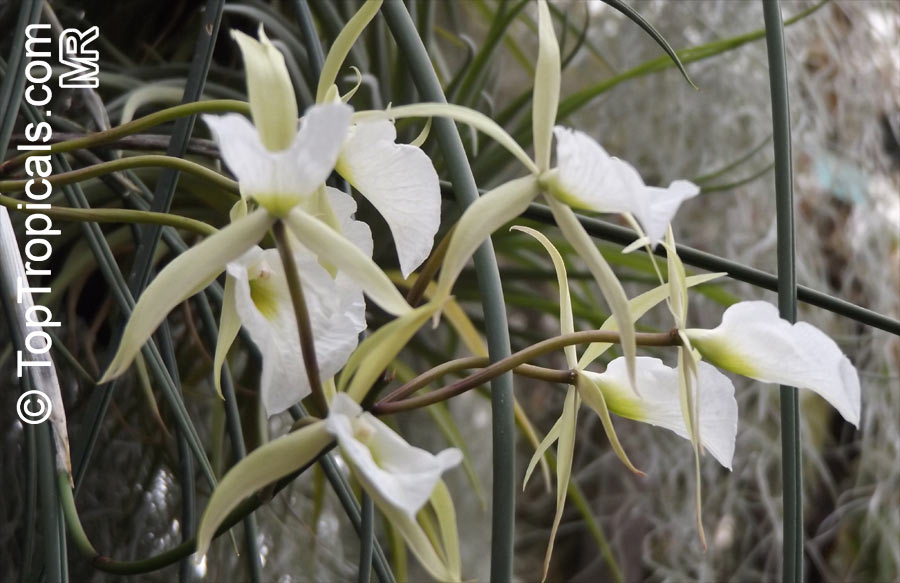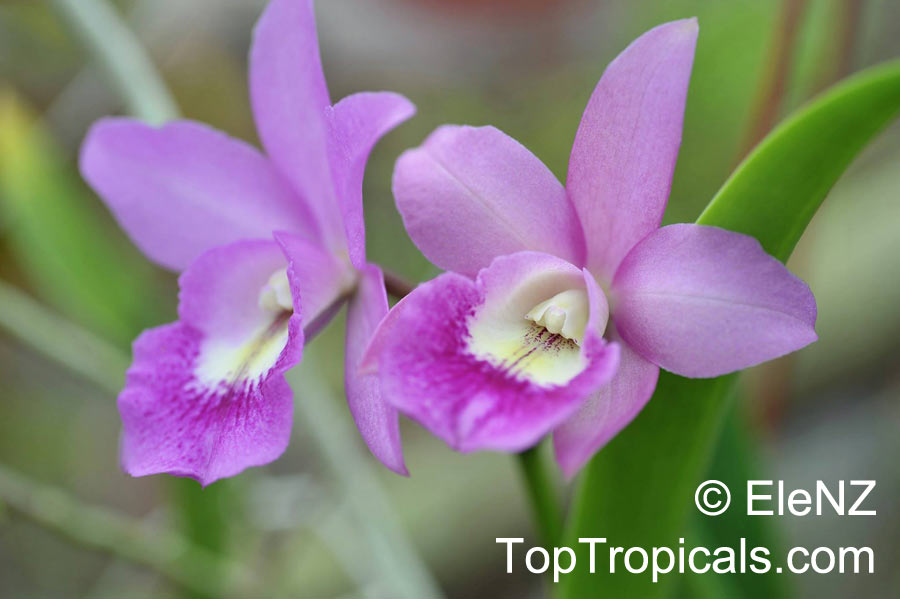Brassavola sp. (Lady of the Night)
Top Tropicals Plant Encyclopedia
Botanical name: Brassavola sp.
Common name: Lady of the Night
Family: Orchidaceae
Origin: Central America, Southern America









model": "text-davinci-003", "prompt": "Rewrite text that starts after $. Use US English only. Make it interesting and keep important information in great details. Avoiod repeating information. Use more than 400 words. Split into paragraphs. Don't use Unicode encoding. Remove info about propagation and include detailed info about growing and plant care in separate paragraph. Include growing care in pot in cold regions. Text must be started with plant name. Plant native to Central America, Southern America. Use keywords: , Small plant 2-5 ft, Semi-shade, Epiphyte, Regular water, Moderate water, Pink flowers, White, off-white flowers, Fragrant, Attracts butterflies, hummingbirds. Grown in USDA Zone: 9-11$Brassavola sp. (Lady of the Night). Growing Brassavola sp. is relatively easy and they can be grown in either pot culture or in a basket as an epiphyte. From spring to autumn, Brassavola sp. should be kept in semi-shade, where they receive no direct sunlight, but only mild direct sun. During the winter months, they can be kept in a brightly lit spot with no direct sunlight. The small shrub grows to a height of 2-5 ft and produces beautiful white, off-white or pink flowers. Brassavola sp. is cold hardy and can be grown in USDA Zone 9-11, although they should be protected when temperatures get too low. In cold regions, pot culture is preferable and Brassavola sp. should be protected from frost and placed in a pot with well-draining soil. It's important to keep the potting soil moist, but not wet. Regular watering is necessary during the growing season, with a moderate water supply in winter. This plant not only looks great but also attracts butterflies, hummingbirds, and other pollinators. Most Brassavola orchids are very fragrant, attracting pollinators with their citrusy smell. But they are only fragrant at night, in order to attract the right moth. Longevity of flowers depends on the species and is between one and weeks. In 1698, Brassavola nodosa was introduced to Holland from the Caribbean island Curaçao. This marked the beginning of the propagation of this tropical orchid and sparked a widespread fascination for orchids.", "temperature": 0.9, "max_tokens": 1000, "top_p": 1.0,"frequency_penalty": 0.0, "presence_penalty": 0.0, "stream": false }
